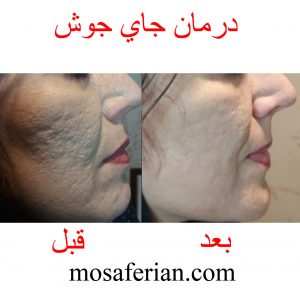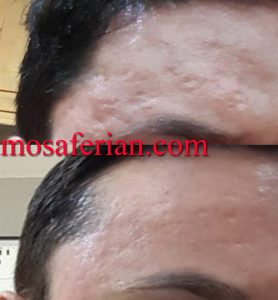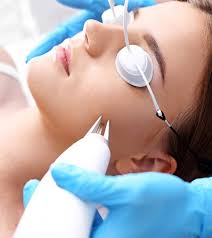Laser treatment for acne scars
Laser treatment for acne scars is a procedure that uses a wand-like laser instrument to remove the upper layers of skin from acne scarring. It is sometimes referred to as “laser peeling” since it removes old skin cells in order to reveal newer, more youthful cells. Ablative laser resurfacing also heats the dermis to promote collagen production, which stimulates skin in the treatment area to heal in a smoother, more even appearance.

How laser resurfacing for acne scars work?
Laser treatment for acne scars allows us to fractionally resurface areas of scarring. This means that thousands of microscopic columns of damaged skin in the affected area are ablated and allowed to re-epithelialize from the intervening bridges of normal tissue. Each successive treatment builds on the improvement achieved before. Best results are achieved in the absence of “ice-pick” scarring.

What is the difference between Co2 and erbium laser?
Erbium YAG lasers have a very efficient beam to target water and relatively limited hemoglobin absorption. Because water is such a critical component in the epidermal and dermal tissue, the 2,940 nm wavelength produced by Erbium YAG lasers is capable of rapidly vaporizing water residing in the skin. This unique wavelength delivers an almost instant skin ablation while limiting heat damage in the surrounding area.
This thermal damage is the biggest difference between Erbium and Carbon Dioxide lasers. Carbon Dioxide lasers have been used to treat and ablate the skin since the 1970s. However, because the absorption in skin tissue is relatively low compared to Erbium lasers (in both water and hemoglobin), their result is substantial excess heat in the surrounding tissue. The consequences of that are localized necrosis (tissue death that leads to slower recovery time), more post-treatment discomfort, and greater instances of post-inflammatory hyperpigmentation (PIH), all while not necessarily allowing for better results when compared to Erbium lasers.
Why Erbium YAG Lasers Offer Superior Treatments Than CO2 Lasers?
1- An Erbium Yag laser wavelength is optimal for skin ablation.
2- Erbium Yag laser can vary their treatment depths.
3- Erbium Yag laser treatment creates less thermal damage and are less painful.
4- Erbium Yag laser treatment have a lower risk of side effects including PIH, skin redness, skin bleaching or hyperpigmentation, compared to Co2 treatments.
5- Erbium Yag treatments require a shorter recovery time compared to Co2 lasers.
laser treatment for acne scars cost
The cost of laser treatment for scars varies, depending on the size of the scar and the extent of the treatment and other treatments such as subcision, PRP and nanofat grafting.
What is the difference between IPL and Laser treatment?
Both laser and IPL treatments are similar in application and are used to treat many of the same conditions. However, laser treatments focus only one wavelength of light on the problem area and IPL (Intense Pulsed Light) releases several, allowing it to treat a larger area faster and to address several conditions at once. Though IPL is often confused with laser treatment, it does not, in fact, utilize a laser, but instead broad spectrum visible light. Laser treatments can be either ablative or non-ablative; because IPL focuses on the second and underlying layers of skin, leaving the first intact, it is non-ablative. While laser treatments “resurface” the skin, IPL “rejuvenates.”
IPL and laser treatment combination therapy
Using IPL before ablative laser would prevent prolonged erythema as well as rejuvenate underlying skin . The wide spectrum of the light would help to eradicate the pigmented spots and the collagen induction starts to build up the new Cushing support.


Leave a Reply